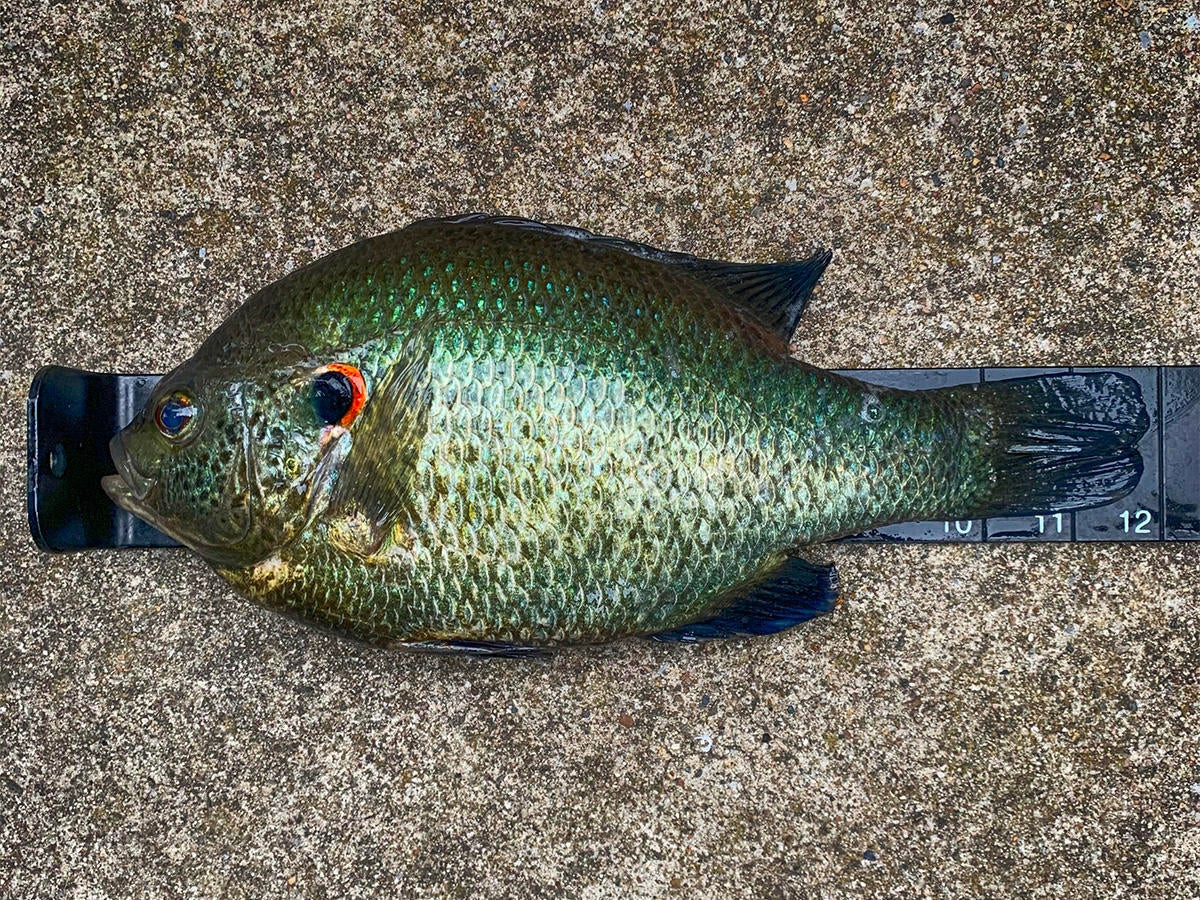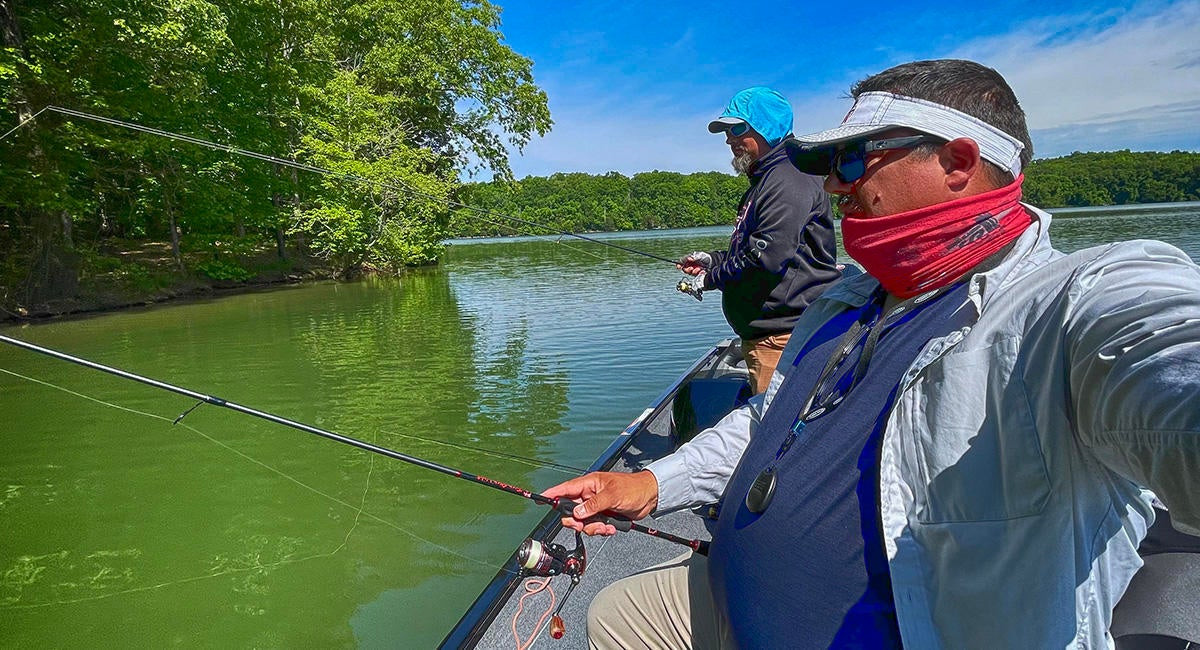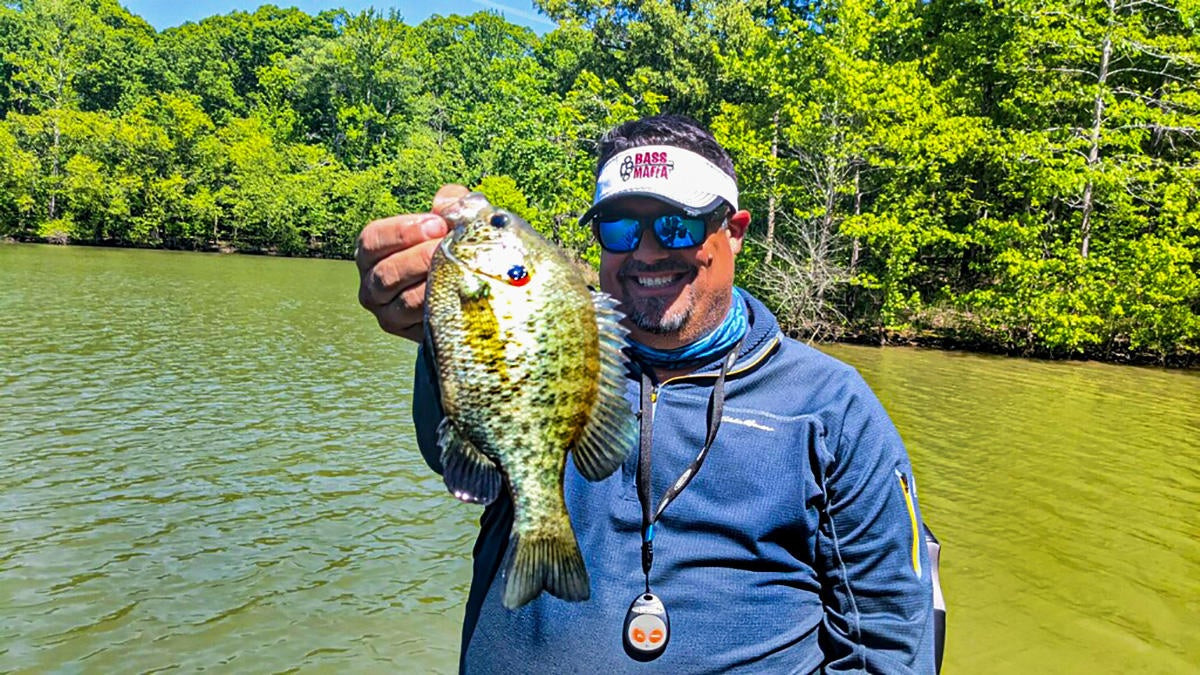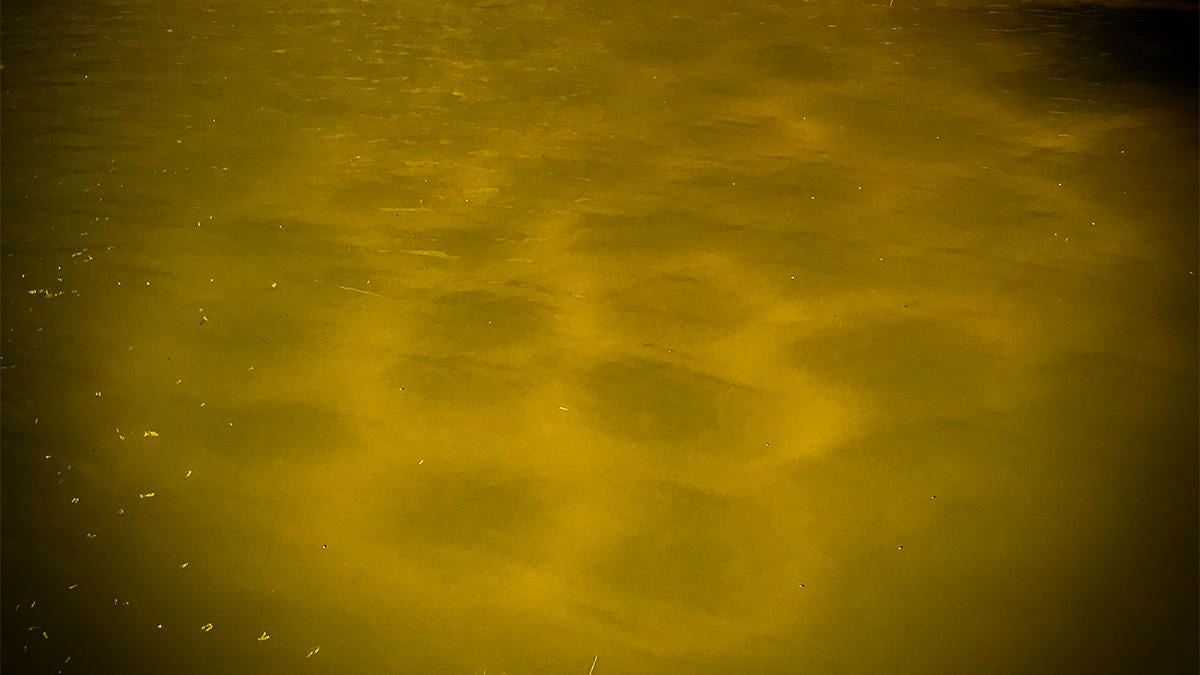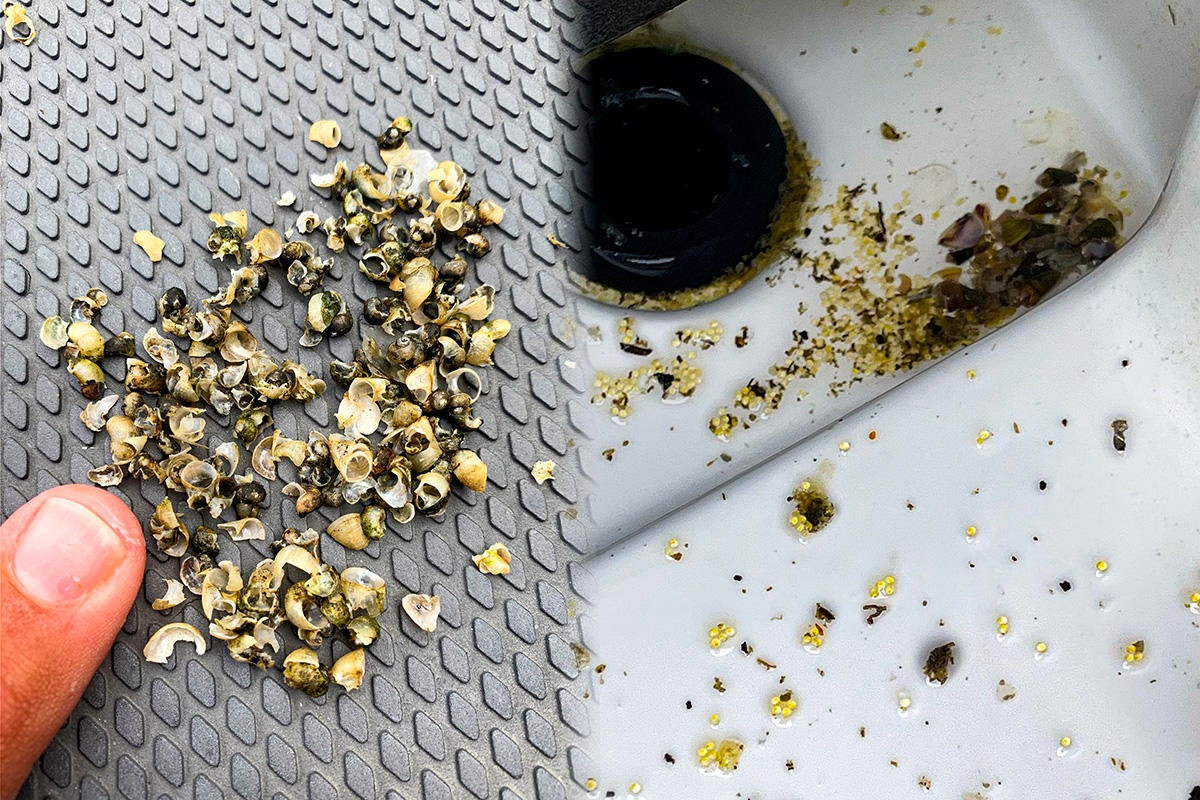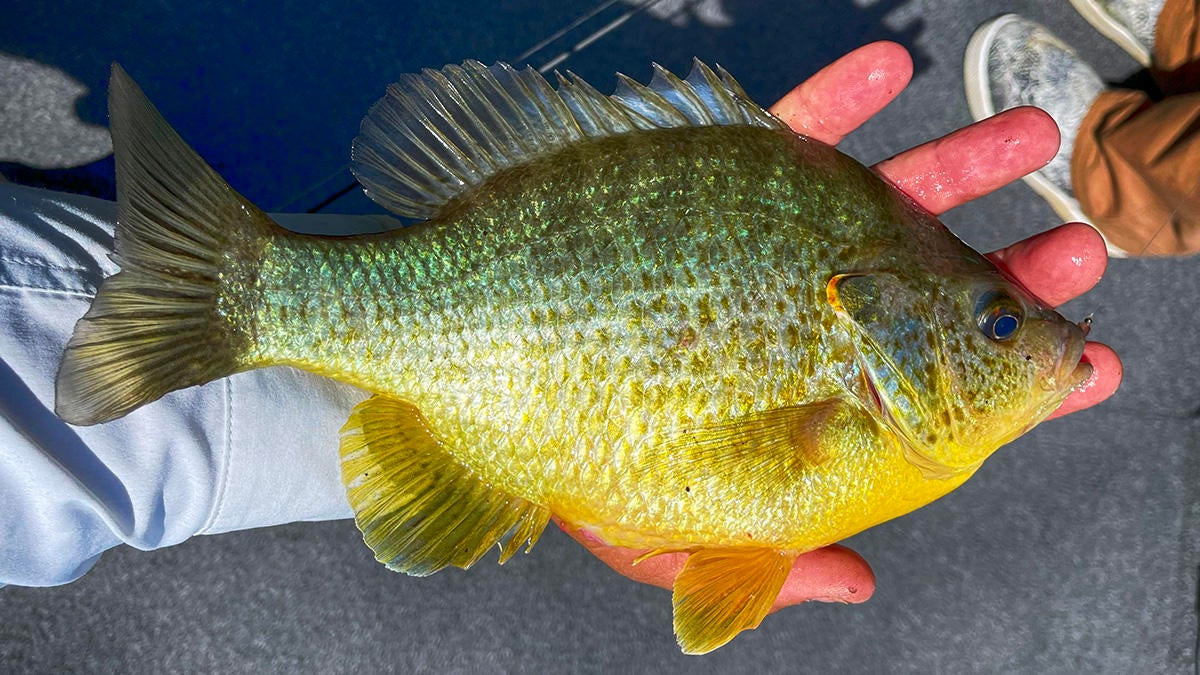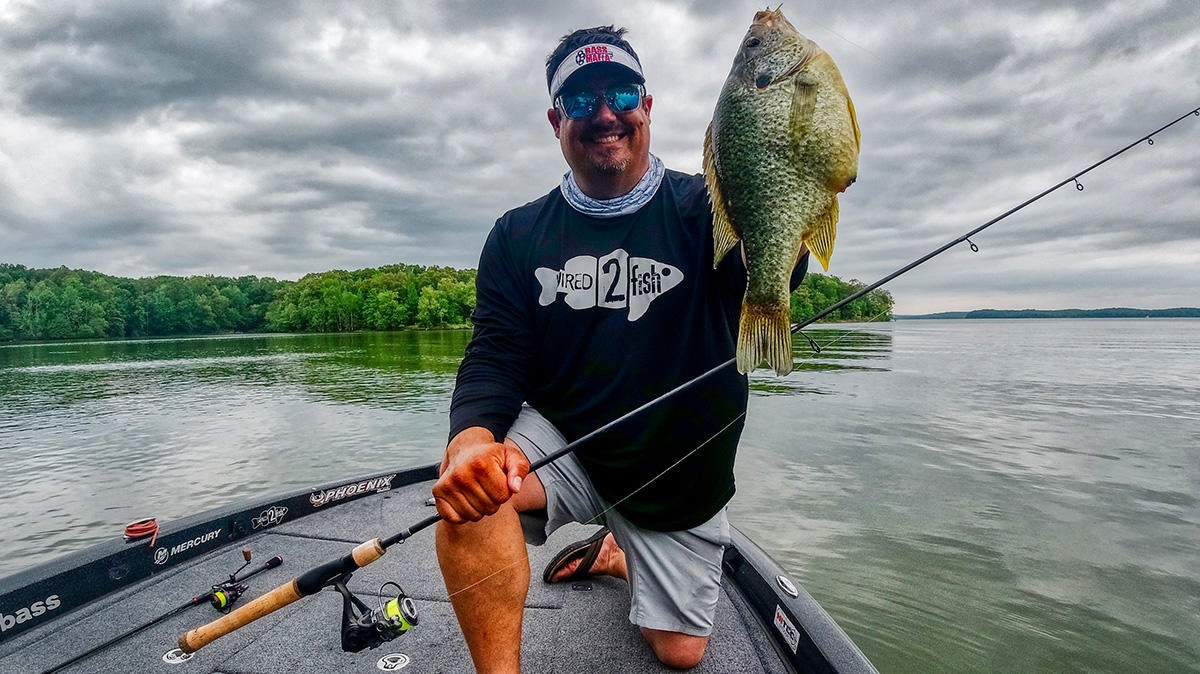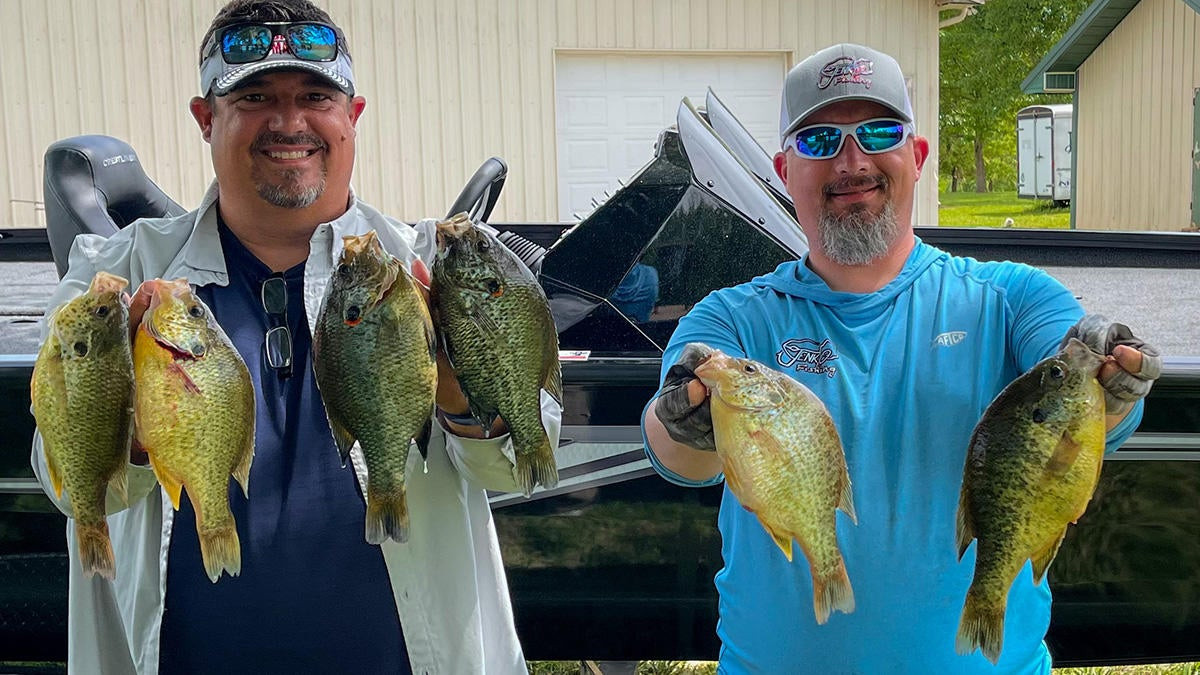Fishing my first bluegill/shellcracker tournament this spring provided me a lot of insight not just into catching big shellcrackers and bluegill but also how much bass fishing and bluegill fishing parallel each other. And realizing that has made me a better angler at catching both species. I’m going to share some of what I learned about catching shellcrackers, or red ear sunfish as many know them, from this tournament as well as the commonalities between searching for and catching bass and bluegill/shellcrackers consistently.
Here are several things I learned about sunfish, shellcrackers in particular, that reminded me of bass fishing:
- Sunfish relate to structure
- Sunfish like cover
- Sunfish use similar spawning areas
- Big shellcrackers disappear most of the year
- Shellcrackers are finicky feeders
- Depth is relative for catching sunfish
- Red Ears spook easily
Redears especially relate to structure
Like a bass, changes in the contour of the bottom play a role in where you will find them at different times of the year and even as they are transition from areas in the same season.
For instance, when we found our winning scrape of shellcrackers, I found a bluegill bed up shallow with a visible ditch between us and the bed. The ditch was 4 feet. The bed was in maybe 1 1/2 feet of water.
After catching some bluegills off the bed, I pulled the worm down into the ditch and caught a nice shellcracker. My partner, Will Robey, Operations Manager for Jenko Fishing, and someone I consider a shellcracker whisperer of sorts, followed suit with a really nice shellcracker and then he lost a giant over 2 pounds. Then he proceeded to steadily pluck them out of the ditch.
As I watched on my electronics, they were funneling up and down the ditch, I believe foraging on mussels and snails and staging in a last prespawn spot before they made their push to go bed. To say we knew it was the winning area was a lie.
We fished our way into it and expanded out to find shellcrackers up and down the ditch. Again not a big contour change, but a noticeable and substantial change considering how shallow everything around it was. The substrate of the bottom composition changed as well and that could have been key for more snails in that area.
Of that, I can’t be certain. I can be certain, however, there was food and fish in that contour. I have seen that over and over again where shad pile into a ditch or a small creek channel and the bass pile in there with them. Those drains hold fish all year long as long as they hold food.
Redears are more likely near cover
I had not realized, I guess until this year, but when I’m catching shellcrackers consistently, they are “next to something.” Now that something might be a bush, a laying log, a patch of grass, a depression or a high spot on an otherwise flat pocket, but they are relating to something nearby, especially in the spring. That’s a consistent behavior with all game fish. They are often relating to cover, structure or forage. But if you find bait and structure, usually the best spot is near a piece of cover around both.
We found that in the Bluegill Blowout put on by Covenant Ranch Ministries out of Paris, Tenn. in May 2021. Josh Lovett, who guides out of Sugar Creek Charters is one of the best panfish anglers on the lake and he had let us know he was catching some big shellcrackers on the LBL side of the lake, but they seemed to be prespawn.
Going off his tips, we located a large school of shellcrackers feeding prespawn in a ditch, but we had no idea what was going on until it was over. The fish were staging and we managed to hook 29 nice sized shellcrackers to win the tournament with 20 that weighed nearly 20 pounds.
We lost two fish over 2 pounds and had several in our livewell that weighed more than 1 1/2 pounds. It was a learning experience for me because I realized those fish were in the only ditch on that flat, staging and feeding. The bottom composition was different in that ditch, it was darker and there was scattered brush. The ditch was also near shallow trees hanging over and into the water.
All the makings for a good spot to find big shellcrackers. I have caught a lot of big red ears on laydowns over the years. They are much harder to fish because snags are more likely but there are big ones hiding there often.
They spawn in patternable areas
Like bass, you can predict where shellcrackers or bluegills are going to spawn. I’ve spent a lot of time with my electronics, not only scanning and looking for bedding areas, but I’ve also sat and watched them real time on my screen with Garmin Livescope.
I see how they move in and out, how they circle on a bed. I see what the area around them is like and where in location on a map these areas become similar as you move up and down the lake. I see how inactive their feeding is when they are making nests or in the act of spawning. They are feeding heavily just before and after they spawn. But I’ve watched them on the screen and been unable to catch them when they are circling rapidly on a bed clearing it out.
You start to recognize what sort of banks you need look for with your naked eye, what sort of depths, what side of the creek to look, when to look, where to look, etc. The more you find, the more you piece together a puzzle that becomes patternable from year to year.
Now we knew where to look, when to look and what to look for when Robey and I entered the Bluegill Blowout, however, the fish weren’t in the normal places yet because we had such a delayed start to the spring. Bass were still spawning in the end of May, and so were the crappie. I had been catching both easily with regularity shallow around bedding areas the week prior. So I knew the bluegill and shellcrackers were a little behind.
Robey and I looked in a bunch of familiar areas with little to show for the efforts. So we started working our way back out the day of the tournament. We knew we could find a few bluegill here and there, and we should work back from where they were going to spawn to where they would be coming from. That means you start in the backs of creeks in the pockets and you work out, up the banks along ditches and creeks in the larger arms and bays. We tried a couple areas that morning without much luck and decided to hunt our way back out.
Turns out, our third stop down a deeper bank leading to a spawning area, I quickly found a small bluegill bed. That gave us a bunch of bluegills to get us started. Then we stumbled onto that nice school of red ears staging and feeding. I learned a lot more about shellcrackers that day than just where they like to feed.
They are finicky eaters
Sitting on a school of big red ears taught me how they bite. I decided after this tournament that I have let a lot of red ears get away thinking they were tiny fish messing with my red worm. After having dozens of red ear bite and get hooked, even when I set the hook on the 10th one, I still would have sworn if I didn’t hook it that it was just a little fish messing with my worm.
Red ears will come up, inspect a bait, peck at it multiple times before sucking it in and moving off slowly. Every time I set the hook, I was surprised at how hard the fish on the other end was pulling because I am so conditioned when I feel bites like that, it’s going to be a little one.
Similarly, some of the biggest bass I’ve caught I hardly felt the bite. I just notice something feels a little different about my lure. Or it feels like it just doesn’t weigh as much. When, I set the hook, it is almost always a big one. I think big fish become very pressure weary regardless of the gamefish species.
Now, I’m a lot more patient when I feel like I’m in a prime area on a contour, with a piece of cover nearby. I let the fish peck and test and watch my line intently for movement and then I set. That has led me to a lot more red ear.
I have caught them with artificial bugs as well. But you have to remember they are feeding on the bottom. So you have to crawl that bait along. I like a little spider or a small paddle tail. I will fish it slowly and use a small lift and drop retrieve much of the time. Much like I would fish a skirted jig and trailer for bass. I want it to be on the bottom a lot. I always add scent. Tip with a worm piece, a Berkley Crappie Nibble or a scent product.
I have had a lot of success also drop shotting a spider instead of a live bait hook. Because the drop shot allows you to dance the jig around in place and keep it just inches from the bottom. You will snag a lot less and catch red ears because of it. But day in and day out, a live red worm is very hard to beat.
They seem to disappear for large parts of the year
While bass fishing has not been exceptionally great on Kentucky Lake the last few years, at times it can seem like there is not a bass in the lake. And there are far more of them I believe than red ear or shellcrackers in Kentucky Lake. I think in both cases, this is largely due to the fact that we don’t know what the fish do for large parts of the seasons.
I believe as the water has cleared on Kentucky Lake, that our fish have become more nomadic, roaming on bait. I think they also suspend more. I believe shellcrackers suspend and/or go really deep for large parts of the year and come shallow just for small windows in the spring and fall. I think the rest of the time, they are foraging on the bottom in deep water and suspending when they are not eating.
A shellcracker almost exclusively feeds down on the bottom. Knowing that, I almost exclusively fish with a drop shot rig with a very short leader to my weight. I don’t want the bait to get more than a few inches off the bottom and will often let slack go in the line so it will settle to the bottom. And then pick it up just enough to tighten the line.
I will also count rocks with it. By that I mean I will pull the weight along so slowly, I feel it catch on each rock as it moves. So I’m moving it an inch or two at a time and then lowering my rod tip to let the slack lay the bait back on the bottom.
Having a lot better understanding now, I plan to spend more time looking for shellcrackers deep in the summer and winter with this slow drop-shot red-worm approach.
Depth is relative
I think bluegills and shellcrackers roam and hang out near where there food is. But they are not necessarily always interested in eating. I think they both can get a lot deeper than we think. I’ve heard of red ears being caught deeper than 30 feet on Kentucky Lake. They will get deeper than a bluegill, and I’ve caught bluegill deeper than 30 feet in the winter.
Conversely, they will get in water so shallow, I can sight fish for them in the spring. I’ve caught many big red ears because I saw the fish swimming around and chasing fish away in the spring through my polarized Costa sunglasses. They are often barely in a foot of water. Some of the biggest ones I’ve caught have been that shallow. So I think a big part of why we can’t catch them consistently is because they may be in a foot of water one month and 30 feet of water the next month. It’s simply where the water is comfortable and where the food is plentiful.
Shellcrackers feed on snails and small muscles as well as insects and invertebrates, although I think they definitely show a preference to snails. When I have several shellcrackers in my livewell, there are a bunch of crushed up shell pieces in my drain when I get done at the end of the day. So no matter if I’m in a foot or 30 feet, I will be fishing for them on the bottom and trying my best to identify where nearby shell beds and snails are.
Protect them like the valuable resources they are
The last few years, I’ve been releasing a lot more red ears in the spring. I love to catch them. I think they are one of the prettiest fish in the lake and they are a hoot to catch when they get more than a pound in weight. But I also want to catch them next year and the year after that, and I know as hard as they are to catch, there probably isn’t a whole bunch of them in the lake. So I would ask you to consider releasing some of the ones you get to replenish the population. Nothing wrong with eating some, but I consider them some of the most alluring fish in our local fisheries and for that reason, I’m trying to be a better steward of their population.
We released a really cool video of some initiatives in MN regarding Quality Sunfish (click to watch). One interesting note is you don’t necessarily have to always throw back the big ones. Releasing any fish, especially the younger fish, will ensure you help the population survive. We caught 27 in the Bluegill Blowout and let 7 go as well as a few others that got off on their own. So we took 20 out of one pocket and let another 10 or so go. Since late May, I’ve caught and released 20 or more shell crackers and kept another 20 to eat. So again I’m not telling you not to enjoy this great table fair. I just want fishing for them to continue for a long time.
Throw some back, even little ones
The presence of big red ear in a system does not mean their spawn will turn into big red ear. That has more to do with food than genetics. They have plenty to eat on Kentucky Lake. A red ear can live to be 10-12 years old here, but they get to 8 inches long by age 3. So the really big ones are likely several years old and won’t live forever.
For this reason, I often advocate releasing the smaller ones more than releasing the big ones. The smaller ones have a lot more spawning and contributing left in them than a much older fish. I try to release as many as I can that are full of eggs as well. The males are just as important during the spawn, so again, if you have a special affinity for shellcrackers like I do, letting some go is always a good thing.
We eat fish and love a few red ears in the mix
They Spook Easily
I’m fairly amazed at how much shellcrackers in particular will spook. I think a lot of folks have only caught a handful of shellcrackers because they don’t realize when they find a few in the spring, once you hook them they are going crazy in a nest running all the other ones out of there momentarily. A lot of times if you will wait, they will settle back down and you can catch a few more. Or, leave and come back. I’ve done that a bunch to catch more in the good areas where I have caught them over the years.
I’ve seen that with bass too. You get a school going, catch a bunch and then they seem to shut off. Most of the time, you’ve moved the school off the prime spot and until they settle back on it, they won’t fire back up again easily. So again this is something patternable you can use over and over again in your fishing.
I think in the Bluegill Blowout, we were moving the fish up and down the ditch by hooking so many. They would get wild and swim down the ditch and we’d catch them on a long cast for about 15 minutes. Then you couldn’t get a bite on a long cast. Then 30 minutes later we’d be catching them literally right next to the boat for 15 minutes. Those fish weren’t on a nest but I think the fired up hooked fish were pushing the others up and down the ditch.
We sat on one school for 4 hours. And we only caught 29. So you definitely have to show patience to catch more than the average angler. We fished 7-foot Jenko Trick Stick Lights with 10-pound braid and 4 pound fluoro. A sensitive rod is everything when hunting big red ears so I use a high quality rod like a Jenko Big T Trick Stick Light.


